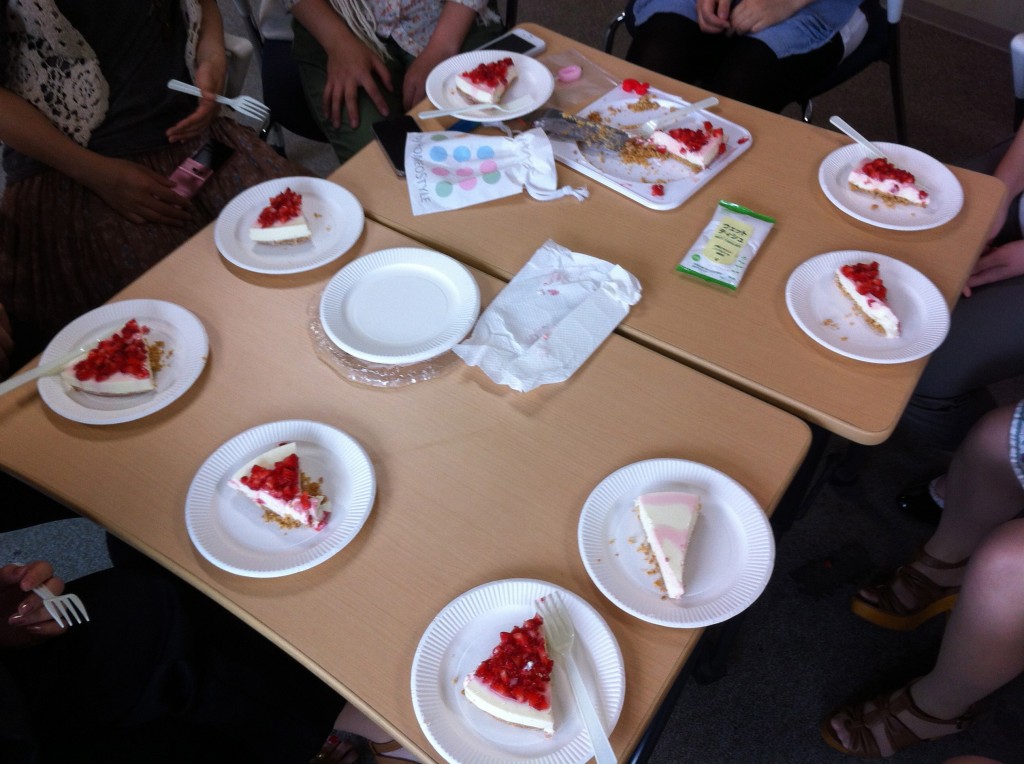Rules I’ve Broken and How I Lived to Teach Another Day – Steven Herder

TD Program Director
I’m reading two great books right now – The Courage to Teach (Palmer, 2007) and Creating Significant Learning Experiences: An Integrated Approach to Designing College Courses (Fink, 2003).
They are both major rule breakers in the sense that through their own research and personal experience, they have evolved beyond the regular assumptions of what it means to be a teacher. They have both created a new paradigm of sorts and based it on their own perception of teaching and learning. Palmer has an endless number of great quotes, for example,
“Good teaching cannot be reduced to technique; good teaching comes from the identity and integrity of the teacher” (Parker Palmer, 2007, p. 10).
“Technique is what teachers use until the real teacher arrives” (Parker Palmer, 2007, p. 5).
Brilliant stuff. And there is so much more to be had in both these books!
So the good writers and the great teachers always inspire me to continue to believe in my instincts in the classroom – to trust my “spider sense” of what is good, what is working and when to tweak things in another direction. This tweaking is not random at all, but based on years of honing my skills at observing what’s actually happening in my classroom.
So, I wonder where these preconceived teaching rules come from? Could it be from all of my previous teachers from kindergarten onwards? Could I be carrying their baggage of assumptions and norms for teaching that they themselves picked up along the way? I’m sure that has had a major impact on many teachers including me. It’s funny, though, the teachers who were memorable were the ones who broke free from the mold, who, as Palmer says, evolved beyond technique, to create or empower their own identity as teachers.
Here are a few of the rules that I regularly break with glee and abandon:
1. Don’t let the students take control of the class.
2. Don’t postpone the start of the syllabus until the team is ready to study
3. Don’t tell students about your personal life.
4. Don’t go off on tangents during a lesson.
5. Don’t negotiate with students.
I’ll elaborate on any of these in the comments section if anyone asks. I would also love to hear which rules you break in your classes. This picture represents a whole new foray into breaking rules if anyone wants to know more…



Hai Steven!
Can you elaborate more about the list of rules that you gleefully break?
Thanks!
Dear Steve,
I really enjoyed your comments, specially the one quoted from Palmer (2007). I would like to add one comment from Jeffrey A. Kottler, Stanley J. Zehm (2005). As you try to recall certain personal characteristics of the outstanding teacher you used to have back at school, “it may surprise you to realize that very few of these notable attributes have to do with the content of what this teacher taught or even with personal teaching methods”. “distinctly human dimensions” ,including personality traits, attitudes, and relationship skills , should also be incorporated into the list of the characteristics that make one teacher outstanding and powerful.
Hi Steven,
Thanks for the insightful ideas in the post. I totally agree with you that there are rules to be broken if we want “the real teacher to arrive”. But, that should be done gradually, I think. The teacher has to develop an ability to wear different hats according to the objectives s/he sets and the situation at hand. As for the rules you break with glee and abandon, I wonder how you deal with unpredictable concequences, especially those resulting from breaking rules 1 and 4! I’d be grateful if you could elaborate on that!
Regads,
Samir
Hello Samir,
I believe we are becoming friends!
Rule 1. Don’t let the students take control of the class.
This happened again just last week. I arrived 5 minutes early for a 9:00 class, and my students said, “Come with us. We have a birthday surprise for Gloria”. I had no idea what they meant, but they are a very good class, and I trusted my instinct to go with the flow. We ended up hiding around a corner for about 5 minutes, and Gloria never arrived. I said, “Well, do you think we should go back and get started with today’s class?” and they said, “Yes, let’s!”
So, even if we lost 5 minutes of class, we gained more respect for each other through this exchange.
My point is to trust your instincts and observe what is happening. If you are earnest, fair and reasonable, most things work out in the end.
Rule 4. Don’t go off on tangents during a lesson.
If you would indulge me with a little more reading, I can explain in detail what I have learned through my SLOW moments:
https://www.facebook.com/notes/steven-herder/slow-moments-volkswagen-beetles-and-pregnant-women/148383275736
Oh, my! You don’t know how relieved I felt, Steven, when I read your post…Thank God I am not the only teacher breaking the rules! When I read about you following your instincts, about knowing what is happening in the class…and about breaking some of those “GOLDEN” rules of teaching, I could just smile, because you were describing me.
I guess the fact that we change the way we were taught is precisely because we didn’t actually like it at the time…at least I didn’t. Besides that, we grew in a different school system, where the teacher was the only expert, we sat quiet, listened and copied from the board…if we do that we our present students, we are doomed for chaos… that’s why I break the rules, too! The five rules that you just mentioned…I have broken them more than once over the years.
My students know about my daughters, I tell them stories from when I was a student, or about the challenges in the use of technology to teach them, and I guess it helps my teens come to realize that I am just a regular person; in my class I have been teaching differentiated syllabus for several years now, so that means that my students are ready to begin at different times…no big deal.
I don’t do tangents often, but sometimes I do allow them…it is an enriching situation where my kids are expressing themselves in English, therefore I find it valuable.
oh! And those desks with cheesecake in your classroom? That is one of my favorite bargain with my kids… every now and then, they like to have chips, and candy and sodas –even cake, krispy cream doughnuts or icecream– in the classroom, and they did… the only condition was to work in the meantime…Those Fridays were actually very productive, because as my kids were munching their food, they would actually participate, accomplish their tasks and help each other.
Sometimes breaking rules can make us approach students more and remove all the limits and obstacles which create misundersatnding and stress. A rigid strict teaher who wants everything to go his own way will surely face classroom problems.Learnes -particularly adults-don’t like to be suppressed or told what they shoud or shouldn’t do.After all rules are made to be broken.Thanks for sharing your ideas Steven.